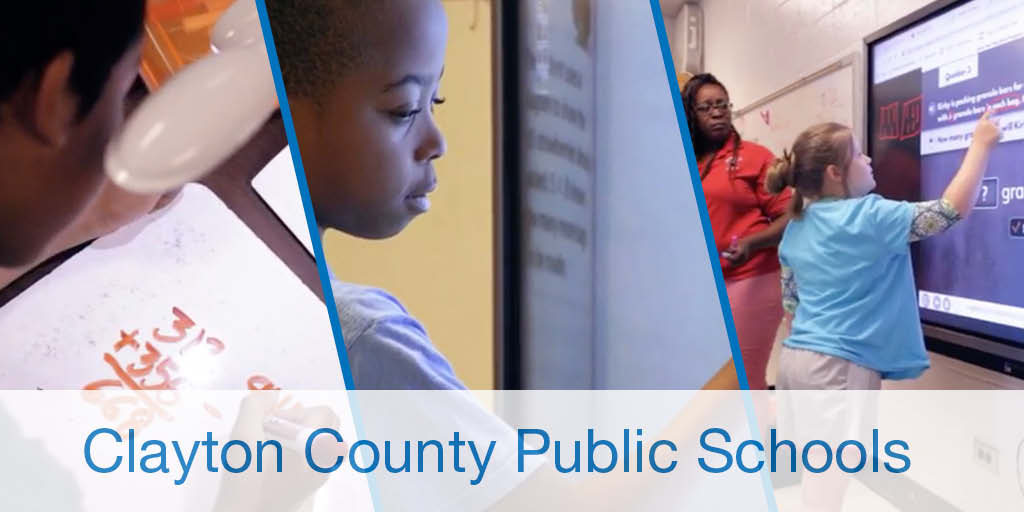
When school districts invest in technology, the tools they buy must be user-friendly, integrated, and ready to use to support instruction—not something that creates an additional burden for teachers. That’s the foundation that Clayton County Public Schools (CCPS)—Georgia’s fifth-largest school district—used in 2018 when it was time to refresh digital classroom tools.
Years earlier, CCPS had spent millions of dollars putting digital technology into classrooms, ending up with a very disjointed solution that included projectors from one manufacturer, whiteboards from another, student response systems made by a third provider, and slates and cameras by yet another. “None of it worked well together,” says Chief of Technology Rod Smith, M.Ed. “From an instructional standpoint, teachers need something that's seamless so they can save instructional time and focus on teaching students.”
Ready for a refresh, the district’s instructional and operational technology teams developed a comprehensive RFP that yielded a number of different bids and submissions. Boxlight quickly surfaced as a top contender. “They had everything we needed, including interactive flat panels, a student response system, document cameras, slates, and a software suite to run it all,” says Smith.
Addressing Needs
To date, CCPS has installed Boxlight’s technology in approximately 3,000 classrooms and media centers. Comprised of 38 elementary, 15 middle, and 12 high schools, the district—working with ProLogic ITS—installed 75-inch interactive flat panels with PC modules and MimioPad™ wireless pen tablets in all classrooms. CCPS was also able to provide several MimioVote™ assessment systems and MimioView™ document cameras for teacher and student use at all grade levels across the district.
Director of Instructional Technology April Mayo, Ed.S. says Boxlight’s solution met CCPS’ requirements for new investments by helping teachers maximize instructional time, increasing student investment, and providing opportunities for timely or immediate feedback. “During the evaluation process, the Boxlight solution met those baseline criteria right away,” says Mayo. The all-in-one solution also eliminated the disparate, underutilized technology that had been put into CCPS’ classrooms years earlier.
Supporting Teachers
“Teachers have created a lot of content using other systems and platforms,” says Mayo, “and don’t want to lose this work just because their district invests in new technology. With the MimioStudio™ software, they don't have to,” says Mayo. “Teachers can take content they've created in other applications (i.e., PowerPoint, IWB apps, etc.), insert those files right into MimioStudio, and then use the rest of the Boxlight tools on top of it.”
Additionally, schools have an assigned Digital Learning Specialist (DLS) to provide ongoing training and support to teachers for the entire Boxlight suite of tools. “The older technology required teachers to learn multiple applications,” says Mayo. “We don’t want teachers to spend hours of their own time learning how to use many pieces of software just for the sake of having those components in their classrooms.” With this in mind, the CCPS team placed a premium on finding a partner that could deliver the professional training to ensure teacher success with the technology.
High Adoption Rates
Less than one year into implementation, the project is 96% complete and on track to post very high adoption rates of the Boxlight solution for the 2018–19 school year. In addition to the onsite DLS support, teachers are able to participate in self-paced online coursework, enabling them to earn a Mimio Educator Certification through Boxlight EOS. Participating teachers have reported only positive feedback, stating that earning the certification has allowed them to build upon the DLS support and utilize the platform at a much deeper level in order to support instruction.
“You can walk up and down our halls at any point and I guarantee that the IFPs (interactive flat panels) are turned on, being used to display content, and supporting instruction,” says Smith. “That’s better than what we were doing previously, and that’s good for teachers, students, and our taxpayers.”





